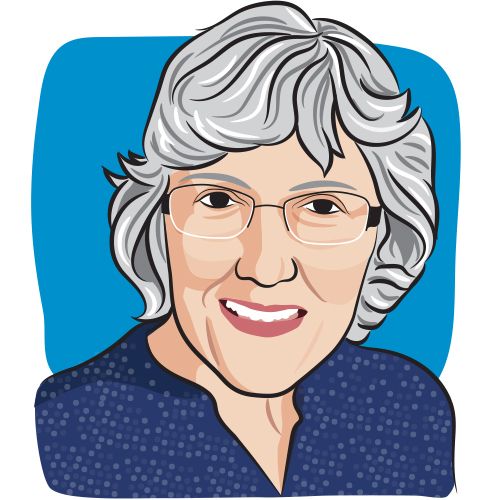Article
Educated Patients Are The ‘Key To The Success’ Of Their Cancer Therapy
Author(s):
“More and more (patients and physicians) need to work together in partnership throughout the cancer journey in order to optimize and make the journey the best possible that we can for every single patient,” says an expert from the Roswell Park Comprehensive Cancer Center.
It is “extremely important” that patients with acute myeloid leukemia (AML) understand the side effects that are associated with their treatment regimens, according to an expert from the Roswell Park Comprehensive Cancer Center.
During CURE®’s Educated Patient Leukemia Summit, Dr. Eunice Wang, chief of Leukemia Service at the Roswell Park Comprehensive Cancer Center in Buffalo, New York, highlighted the fact that there has been a recent influx of at-home treatment options over the past four years. Those drug approvals have made it easier for a patient to receive their treatment from the comfort of their home, but harder for the care team to monitor the patient’s side effects.
Wang explained that patients who administer their treatment at home may not realize that a side effect they are experiencing is due to the drug, or they may stop treatment on their own without consulting their doctor until their next appointment when the leukemia may be out of control.
“Having the patients now as partners in the chemotherapy administration process and monitoring side effects really requires an educated patient to be working together with me to help them get through their treatment,” Wang said in an interview with CURE®.
A general rule of thumb, according to Wang, is that a patient should sit down with their prescribing clinician before starting a chemotherapy agent to discuss any potential side effects. She recommended patients schedule another appointment to see the clinician a few weeks after starting the therapy to discuss any side effects they may be experiencing.
“Educated patients are key to the success of their cancer therapy in an era where we're moving towards more and more outpatient therapy and oral chemotherapy pills,” Wang said.
She also noted that she even offers patients day and nighttime phone numbers, as well as emails as a way for her patients to keep in touch about side effects sooner rather than later.
“There’s no reason that you, (the patient), have to continue to suffer through a lot of those side effects,” she added.
Severe Side Effects
Wang highlighted several therapies that are used to treat AML and reviewed the common severe side effects that may occur with their usage. She cited studies that demonstrated that some of the treatments may be associated with severe side effects such as anemia, low white blood cell counts, fever, pneumonia and infections.
She also discussed some of the rare but severe side effects that have occurred with the usage of Tibsovo (ivosidenib). One such side effect that may occur because of treatment with Tibsovo, according to Wang, is IDH-inhibitor–associated differentiation syndrome. She explained that the syndrome can be life-threatening and symptoms to watch out for include fever, rapid weight gain, respiratory symptoms, excess fluid in the lungs, hypertension and kidney failure. Patients may not realize that these severe side effects are because of the targeted therapies, and instead of reaching out to their oncologist immediately they seek emergency or urgent care where those physicians may not also recognize that the side effects are a result of the therapy.
Another rare complication associated with treatment with Tibsovo, according to Wang, is Guillain-Bare Syndrome, which is when a patient is having progressive weakness in their arms and legs and decreased reflexes in weak limbs. Wang mentioned that this can eventually affect the muscles that are crucial for breathing.
Wang added that this complication must be recognized by both the treating clinicians and the patients who are receiving the treatment. “So, education is crucial for recognition and successful treatment,” she said. “We certainly don’t want our patients to be suffering life-threatening side effects and our attempt to cure them of their (AML) in some cases.”
Unexpected Toxicity
There are many physical side effects that can be directly felt by a patient. However, there is one toxicity that is rather unexpected, according to Wang.
“(Financial toxicity) is an important toxicity because it’s unexpected both by the patient as well as by the treating clinician,” she said. “And I only mention it because it is something that, just like the medical toxicities, needs to be … addressed.”
Many of the therapies for AML can range in cost from approximately $2,000 a month to upwards of $50,000 a month. As a result, Wang said, patients may stop taking their needed medication or stop refilling their prescription. She stressed that patients should know that clinicians can offer resources to help them with financial toxicities. She said that once financial toxicity is brought to her attention, she may be able to get the drug for free or at very little cost to the patient.
“More and more we need to work together in partnership throughout the cancer journey in order to optimize and make the journey the best possible that we can for every single patient,” she concluded.
For more news on cancer updates, research and education, don’t forget to subscribe to CURE®’s newsletters here.
















